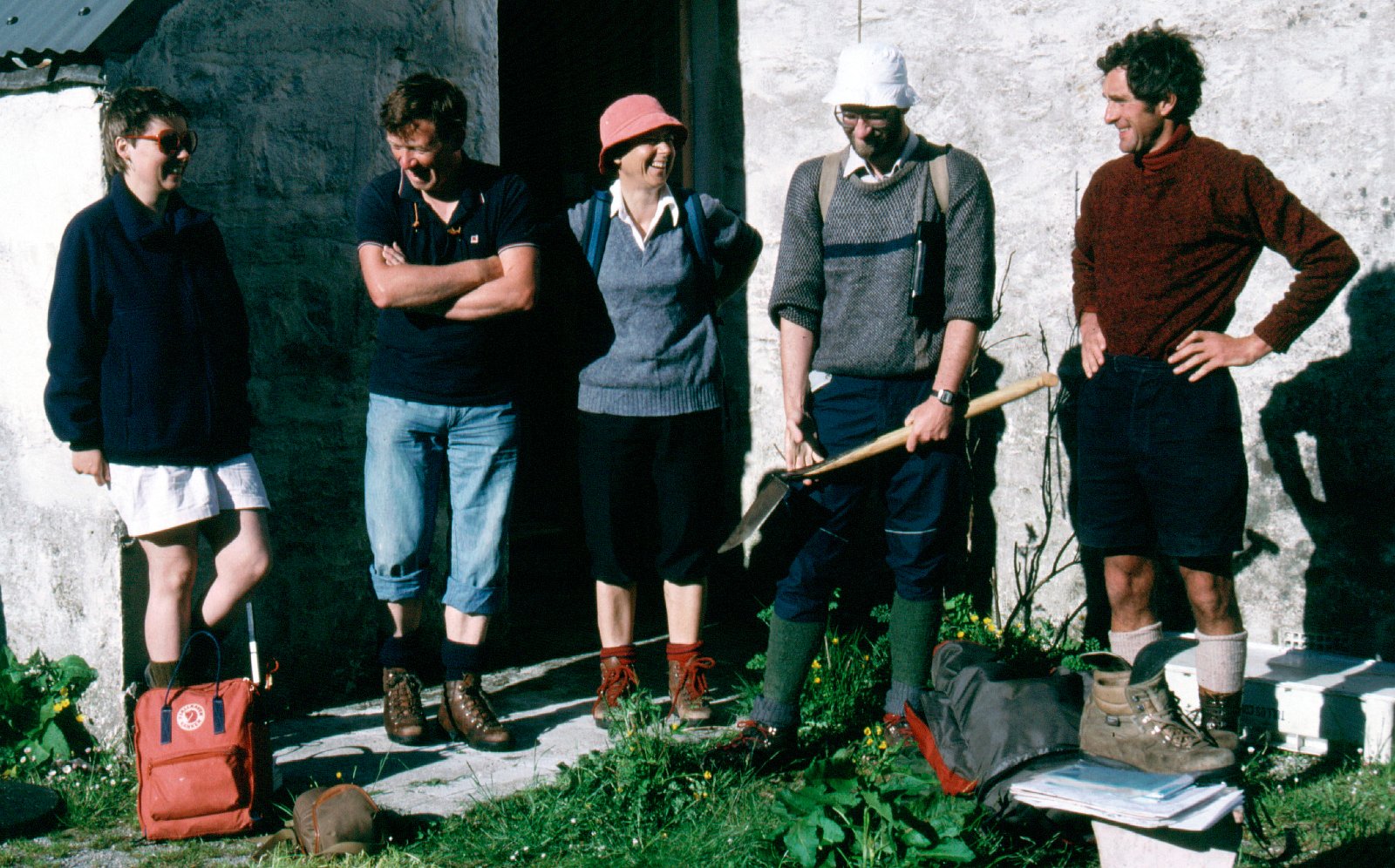Obituary: Caroline Wickham-Jones
Remembering Caroline Wickham-Jones - a much-admired archaeologist and ex Trustee of the John Muir Trust.
Caroline Wickham-Jones was an outstanding archaeologist and a highly effective communicator in writing and broadcasting on a wide range of archaeological subjects. Her primary interest was in the earliest inhabitants of Scotland, across sites ranging from Rum to the Aberdeenshire Dee, but particularly in Orkney.
Caroline first became associated with the John Muir Trust when she joined our first work party, in Li and Coire Dhorcaill, Knoydart, in June 1988.
One of the Trust’s founders Denis Mollison was delighted to welcome her: “It was immensely encouraging in those early days to find that we attracted so many expert people as volunteers in our conservation work. Alongside Caroline, were Paul Jarvis (ecology), Andrew Currie (NCC staff on Skye), Dave Mardon (NTS botanist at Ben Lawers), Jim Rowbottom (otters) and Bob Aitken (paths).”

^ Caroline (pictured left) with Terry Isles (first Trust Director), Penny and Bob Aitken and Richard Wood. (Photographed by Denis Mollison)
Bob Aitken and his wife Penny first met Caroline when they gave her a lift up to Kinlochhourn to join that 1988 work party. “We were slightly dismayed that Caroline wasn't quite equipped for the stiff trek into Barrisdale, but we quickly learned that she took all that cheerfully in her stride,” said Bob.
“Penny and I set off early to do path survey, amusing ourselves in passing up Coire Dhorcaill to see how many shielings we could pick out with our untrained eyes. Caroline, coming up the corrie later in the day, identified about three times as many as we had - but didn't mock our amateur efforts.
“She modestly underplayed the range and depth of her expertise, though she did admit to being quietly proud of her skill as a flint-knapper.”
Caroline was a Trustee of the John Muir Trust from 1989 – 1995, when she served on the land management committee and information and education committee. Those who worked with her remember her wonderful enthusiasm and rare ability to communicate and share her expertise that made her “a lovely Trustee”.
- Caroline Wickham-Jones (1955 - 2022) is survived by her son Guille.
- Find out more about Caroline in the Guardian obituary.
- Enjoy Caroline’s thoughts about the importance of archaeology in wild places in the following article, reprinted from the October 1990 edition of the John Muir Trust Newsletter.
Archaeology in a wilderness by Caroline Wickham-Jones
As a [John Muir Trust} Trustee and an archaeologist, I have often been asked about the apparent dichotomy between archaeology and wilderness. This short piece is designed to explore the relationship of the two.
We are inclined to think of wilderness as land that has been untouched by human hand, but this is not the case. There is, in Britain, no truly natural land. In Scotland, since the end of the last ice age, some 10,000 years ago, people have lived and, in their different ways, worked.
The first settlers were hunters, later on there were farmers, and finally industrialists (today we are all, whatever our profession, part of an industrialised nation). All of these past generations have left their mark on the land. The remains of the peoples of the recent past are more tangible: ruined castles; the remains of a croft house; decaying machinery; sheep grazed mountains. The remains of the earlier past are there none the less: the earliest hunters burnt the woodland to improve their hunting; they killed and gathered selectively; and they spread out across the land unfettered by the need for roads, no glen was too remote for home. Their evidence may lie merely in grains of pollen and flecks of charcoal at the bottom of a peat bog, or in collections of stone flakes eroding out of the side of a ditch, but it survives from the north coast of Sutherland to the banks of the Tweed.
The landscape that we see today is not just the product of our current policies and practices, it contains within it the record of all previous inhabitants. The archaeological sites and monuments of an area may not be spectacular, but they are part of the land resource in the same way as geology or botany. We should treat them with care, as we would eagles or otters. The record of the human past cannot be separated from that of the rocks, trees and wildlife and, like them, it has something to offer. In order to understand this contribution, we use archaeology. Archaeology is not just about upstanding sites, or physical finds; it is also about research into past environments and the development of the landscape. As such it is a vital part of the management of the land and, by documenting the changes of the past, it provides an essential tool for future conservation.
Today we are all too familiar with the artificial countryside, whether built townscape or neat farmlands. We escape to remote landscapes and consider them "natural" because they contain none of the trappings of our modern civilisation, but this is not so. We must beware of equating "wilderness" with "untouched", wherever we are in the world. Even the mountains of the USA and rainforests of South America have been home to generations of people for thousands of years, though they have used them in a way quite different to our own.
In 1991 the Royal Commission on the Ancient and Historical Monuments of Scotland will be carrying out a survey to document upstanding archaeological remains on the Trust land in Knoydart. This is an integral step in ensuring the well-being of the estate, but one which few landowners have taken. The record of the people of Li and Coire Dhorrcail may be humble, but it is there none the less, and we wait with excitement to see what RCAHMS finds.
- This article by Caroline Wickham-Jones (1955 - 2022) first appeared in the October 1990 edition of the John Muir Trust Newsletter.

